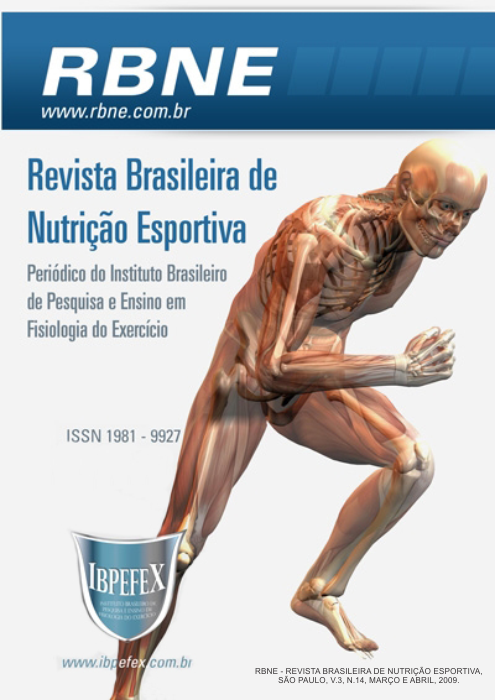The relationship between the nutritional status and the interval training of indoor cycling, based on the physiological behavior of blood glucose
Abstract
With the increasing demand for fitness centers by people interested in losing weight, it is increasingly common the practice of physical exercise with inadequate nutrition during the morning. Objective: Observe the relationship between nutritional status and interval training of indoor cycling, based on the physiological behavior of blood glucose. Materials and Methods: This was a cross-sectional study conducted with 10 volunteers with an average of 32 years (4 males) submitted a protocol for interval training of indoor cycling, recorded the morning meal in the diet, and described the heart rate and blood glucose before the test, 25 minutes after the test for 45 minutes. Results: Individuals who were in complete fasting for more than eight hours, the values of glucose were similar to those that fed and blood glucose values after training are higher than the pre training. Discussion: The carbohydrates are stored in muscle and liver as glycogen, which is the main fuel energy, particularly during exercise of high intensity. The blood glucose can be derived from two sources other than the digestion of carbohydrates, which is the glycogenolysis and glycogenesis. Conclusion: The activity of indoor cycling in fasting, provides blood glucose values similar to those that fed before physical practice and may also highlight the lack of hypoglycemia in individuals with fasting.
References
Ambrogi, G. Ciclismo Indoor. Apostila entregue aos congressistas do SPINNING MILLENIUM TOUR. São Paulo. 1999.
American College of Sports Medicine. Guidelines for exercise testing and prescription. 6a ed. Philadelphia. Williams and Wilkins. 2000.
American College of Sports Medicine. The recommended quantity and quality of exercise for developing and maintaining cardiorespiratory and muscular fitness, and flexibility in healthy adults. Med Sci Sports Exerc. Vol. 30. Núm. 6. 1998. p. 975-991.
American Diabetes Association: Cure – Care - Commitment. Disponível em: <http://www.diabetes.org/home.jsp>. Acesso em: 19 dezembro 2008.
Champe, P.C.; Harvey, R.H. Bioquímica ilustrada. 2ª ed. Porto Alegre. Artmed. 1996.
Da Poian, A.T.; e Carvalho-Alves, P.C. Hormônios e Metabolismo: integração e correlações clínicas. São Paulo. Atheneu. 2005.
Johnny, G. Manual do instrutor – JOHNNY G SPINNING PROGRAM. Parte integrante do material didático utilizado na formação de instrutores distribuídos no Brasil. 2000.
Lehninger, A. Princípios de bioquímica. 1ª ed. Rio de Janeiro. Guanabara Koogan. 1986.
Mcardle, W.D.; e colaboradores. Fisiologia do exercício: energia, nutrição e desempenho humano. 5ª ed. Rio de Janeiro. Guanabara Koogan. 2003.
Moraes, C.F.; e colaboradores. Variação da freqüência cardíaca, pressão arterial sistêmica, glicemia e duplo produto de forma aguda no ciclismo aquático e indoor. Revista Brasileira de prescrição e fisiologia do exercício. Vol.1. Núm. 6. 2007. p. 77-85.
Tabela brasileira de composição de alimentos. Versão II. 2ª ed. Campinas, SP. NEPA-UNICAMP. 2006. p.113.
Wilmore, J. H. e Costill, D. L. Fisiologia do Esporte e do Exercício – 2ª ed. São Paulo. Manole. 2001.
Authors who publish in this journal agree to the following terms:
- Authors retain the copyright and grant the journal the right of first publication, with work simultaneously licensed under the Creative Commons Attribution License BY-NC which allows the sharing of the work with acknowledgment of the authorship of the work and initial publication in this journal.
- Authors are authorized to enter into additional contracts separately for non-exclusive distribution of the version of the work published in this journal (eg, publishing in institutional repository or book chapter), with acknowledgment of authorship and initial publication in this journal.
- Authors are allowed and encouraged to post and distribute their work online (eg, in institutional repositories or on their personal page) at any point before or during the editorial process, as this can bring about productive change as well as increase impact and impact. citation of published work (See The Effect of Free Access).






